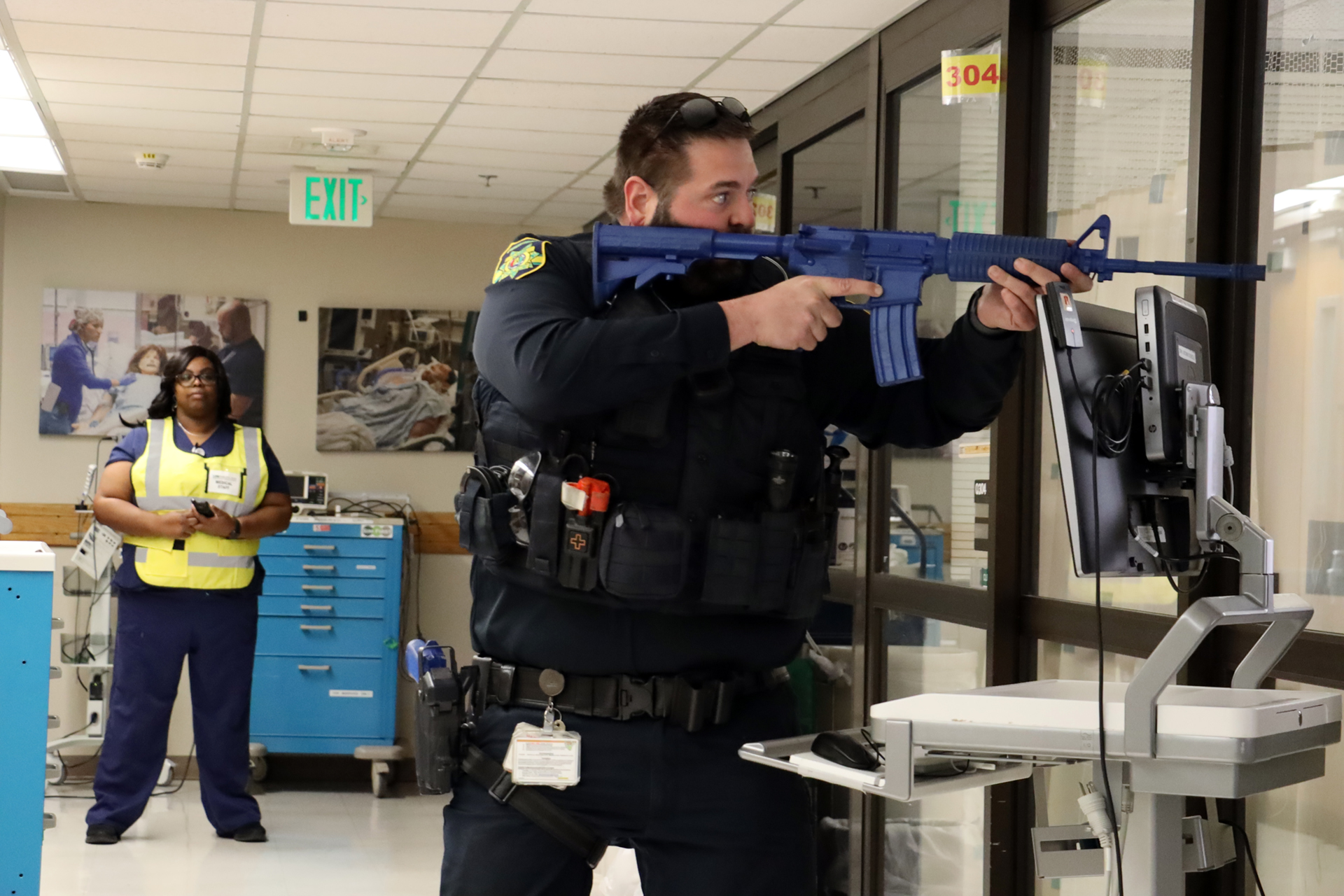Active shooter pilot sim tests emergency preparedness skills

Providing a psychologically safe environment for learners is a crucial factor in health care simulation—especially in high-risk scenarios.
When UAB Health System Emergency Management partnered with UAB Clinical Simulation, the UAB Hospital Emergency Department (UED), UAB Police, UAB Hospital Safety and UAB Spiritual Health to host an emergency preparedness pilot drill depicting an active shooter scenario, that factor was put to the test.
According to emergency preparedness coordinator John Hooper, the pilot was designed to hone the learners’ skills—in this case, UED staff members, including nurses and physicians—while identifying strengths and opportunities for improvement.
“Basically, within a short time frame, we wanted participants to identify a threat, recognize the threat and take protective actions,” Hooper said. “We also wanted them to test the process by simulation in how they would communicate with UABPD and other people in the unit. The goal was to have them go through these processes and grow comfortable with them, and they were successful, based on the feedback we’ve already received.”
The pilot was developed per request of the UED, Hooper explained, and representatives from each of the participating departments were involved in the planning process. The team agreed to host the pilot in the UAB Clinical Simulation lab, which would be closed off to the public, and informed all neighboring and nearby departments so the simulation wouldn’t be mistaken for an actual scenario.
“We wanted to make it realistic for the participants,” Hooper said, “so we had a UAB police officer play the role of the active shooter, and we brought in sound effects to add to the realism.”
Participants were offered ear plugs as one of many safety precautions.
“Because it can be a high-stress exercise, we wanted to make sure that all the participants knew during the process that they could step away at any time if it was too much for them,” Hooper said, adding that a representative from UAB Spiritual Health was also on hand to offer counseling if necessary. “It was a great joint effort.”
And with the pilot already garnering positive feedback, he’s hopeful it will eventually move forward as an actual drill.
Andres Viles, director of immersive simulation, was glad UAB Clinical Simulation could participate.
“I think this is in line with our ‘SimFirst’ culture and our goal of being responsive to institutional and stakeholder needs,” he said. “People reach out to us because of our skill in facilitating difficult conversations, as well as pre-briefing and debriefing strategies so participants can have a meaningful and safe learning experience. I feel this simulation was extremely impactful, psychologically safe and followed our industry’s best practices.”
UAB Medicine’s Clinical Simulation program offers opportunities for individuals and teams across UAB Medicine and beyond to practice before they deliver care. We encourage all who provide and support patient care to “SimFirst.” Together, we can put our patients’ safety first.




0 Comments